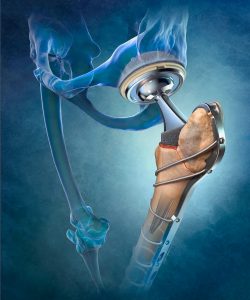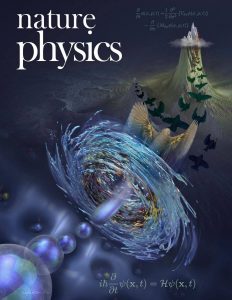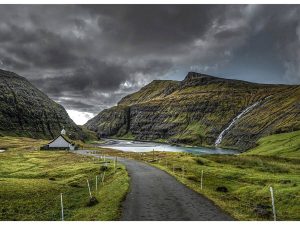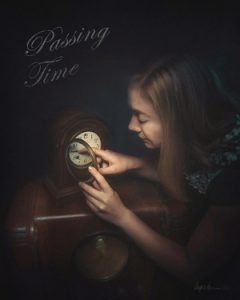Whether you’re cuddled up in your favorite chair with a cup of tea or enjoying a little pumpkin-spiced treat outdoors, it’s the perfect sweater weather. I hope this next profile in our Drawn Together series finds you well and in good autumnal spirits. I’ve been busy voicing political spots (don’t forget to vote!), and making daily tweaks to my soon-to-be-launched (I promise!) new website. I’m also attending and contributing to some really awesome virtual conferences speaking about medical and non-broadcast narration. Through it all, I’m still amazed by how creativity in business and in play has managed to spring up in spite of all odds against it. And when it comes to perspective, creativity, and imagination, no one knows and shows it better than medical illustrator, Wayne Heim.
Wayne Heim is a Bachelor of Fine Arts graduate of the 5-year program at the Cleveland Institute of Art in Ohio. He always knew he wanted to be a medical illustrator. In addition to his fine arts background, he sought out graduate-level anatomy classes to broaden his education. Quite frequently he would observe surgeries while also sketching and making notes. He participated in a special exchange with the Medical College of Georgia (MCG), started by one of the country’s foremost medical illustrators, Bill Westwood. Wayne also spent part of his undergraduate years studying graduate-level surgery and illustration techniques at the MCG. It was there he was able to train with the late, great David Mascaro.
What Were You Wearing?

Ask any medical illustrator what they were wearing at the moment they realized that they could pursue art and science as a life-long career. They will remember that seminal moment. Wayne was in jeans and a t-shirt when, during a high school art class, his teacher casually mentioned a friend who was a medical illustrator. The art teacher went on to explain what the job entailed. Like a clap of thunder, Wayne immediately knew this was what he wanted to do. Always being into art and science, this was the perfect way to marry the two things he loved the most.
COVID-19 with Sex Appeal!

Although the majority of Wayne’s illustrations are in orthopedics, he recently worked on a coronavirus project. Through research, his client discovered that the COVID virus lives in the bones of the inner ear. The problem? When they perform operations on the ear, the particles of bone vaporize into the air.
They developed a tenting system that attaches to the patient. It catches all the particles to prevent the spread of the Coronavirus. Wayne’s assignment was to illustrate this novel solution. Draw a bag that looks crumpled and full of wrinkles, fill it with particles inside, and “make it look sexy.”
Energy That Matters

Then there are projects where every ounce of creativity Wayne can muster is his to express. Magazine cover illustrations, in particular, are more conceptual and allow a lot more of Wayne’s input. He recalls a project he worked on for Nature Physics magazine for a group of researchers. They were studying how they can encourage evolution to take certain paths by controlling their environment. Controlling stimuli that are known to affect the mutation rates of certain cell structures. By doing this, they could forcibly encourage the evolution process to make certain turns.
Successfully Attacking Cancer
In certain cancer treatments, for example, if you take a drug that actually will kill cancer outright, it will kill the person. Because they know that a cancer cell mutates at a certain rate, they found if they expose the cancer cell to an agent that will mutate it in a certain way. It may then become responsive to a second or third drug, successfully attacking cancer. They are using this process with drought-resistant crops as well. It’s quite fascinating.
Personally, I find the image Wayne drew for the cover of Nature Physics magazine to be particularly alluring, for its motion, surrealism, and beautiful mysterious colors. When I asked Wayne to explain it, this is what he said:
“In this image blue cold atoms are controlled by optical lattices, represented by egg-crate-like pits. Conversely, in evolutionary physics, the migratory charting of mutations is shown using fitness landscape charts that, instead of pits, create mountains or a mirror of what’s seen with atoms.
With an intentional nod to Darwin, the father of evolution, blue atoms are evolving into Darwin finches representing the “evolution” and introduction of cold atom concepts into the world of natural physics. Cold atoms tend to migrate to the bottom of lattices whereas charting of mutations shows patterns of migration towards the peaks with some making poor choices and getting lost and dying out along the way.” Now you understand completely, right?!
“Never let the truth get in the way of a good story.”
– Mark Twain
Picture Perfect Perspective!
With an extensive background in medical illustration, four children, and a wife, one would think Wayne couldn’t possibly have time to be remarkable at anything else. And one would be mistaken. Wayne also travels far and wide to take extraordinary pictures. He graciously outlined his creative process, which you’ll learn can oftentimes be similar to the illustration process.
“ I often do quite a bit of work to my raw image captures. The raw image becomes my sketch so to speak; the foundation for the story I want to tell. I adjust the shadows lighting, even adjust which textures I want to pull out or knockback in order to set the mood or tell the story I want to tell. Mark Twain said, “never let the truth get in the way of a good story”. I embrace this quite often in my photography and add lights or change the lighting or time of day. Change the color, tone, or feel of an image-making them cooler or warmer to enhance the mood. I crop the image to guide the viewer to the area of interest.”


Artist or Scientist?
Not willing to call himself just an artist or a scientist, Wayne considers himself a visual problem solver, a storyteller. Most of his clients have difficulty explaining what they’re trying to accomplish. They’ve got an idea which they want to communicate and simplify in a way that layman can understand, but just don’t know how to do it. “As a medical illustrator, your job is to tell the tale.
Sometimes the story is of an object or features that can’t be seen or visualized with the naked eye, or it might be something that is obstructed by other tissue or structures. My job is to creatively highlight the important aspects of the often hidden story; while including enough surrounding information (texture, structures, color, or absence of color) to set the stage for the main actor(s) in a way that makes it easy for the viewer to focus on the most important parts.”
Whether the medium is photography, illustration, or building a sculpture in the backyard (more on that later!) all of which Wayne does, he’s sculpting a storyline. Similar to voiceover, the rule of thumb in the illustration world is you have about 3 seconds to catch someone’s attention. So color choices, lighting, drama, and the textures you use are all paramount when generating interest in your work. The ability to captivate your viewer is what sets apart the mediocre from the exceptional illustrators and photographers in the end.
Is the Perspective Magic Every Time?
With illustration, the parameters are set, and the narrative is predefined, so you find yourself having to be creative with a whole list of dos and don’ts. “It’s an incredible challenge that way.” While there is nothing scarier to an artist than a blank canvas, Wayne is of the mindset that if you place 100 limitations on him, you’ve given him more of an opportunity to knock it out of the park. And with photography — not only is Wayne a phenomenal illustrator, but he’s also an extraordinary photographer — it’s a little different.
Sometimes certain photos resonate right away and other times he goes through multiple rounds of revisions. And in true creative fashion, he often gets lost in the tiniest little details. But the older he gets, the easier it has become to determine which projects get more finessing and which don’t. His best tip: don’t send a project off to the client at 2 a.m. when you’ve completed the job. Nine times out of ten, you will find something you need to change with fresh eyes in the morning.
Do Go Chasing Waterfalls!
When the majority of our country came to a screeching halt, Wayne’s workload temporarily did the same. Since most of Wayne’s work is in the orthopedic field, he was pretty much shut down from April until the beginning of June, since elective surgeries were put on hold. So what does a medical illustrator do to keep himself busy? He builds a waterfall, of course! Wayne moved three tons of rock to create a masterpiece in his backyard. Needless to say, he was thrilled to be back at the desk and away from back-breaking physical labor.


Dad Duties and Vacation Vibes
When Wayne isn’t illustrating, taking photos, or building waterfalls, he’s taking care of various dad duties. Of his four children, three are in college and one is in high school. They’ve all been staying well and taking whatever precautions necessary to keep their elders safe. They had planned a trip to Scandinavia in the late winter for Wayne to take winter photos of the Northern Lights. Ultimately, they canceled the trip due to the pandemic.

Trust the Process
Many of Wayne’s projects are for product manufacturers (medical device illustrations) and surgical techniques. So typically when he gets a gig, he follows a process. Usually, the clients will send him the rough alpha (draft) layout of what they plan on showing. He’ll then review it and talk about how to showcase the product or technique in the best light. With certain orthopedic medical devices, they’ll send him the CAD models to the parts that are used and Wayne will work up a 3D build on the computer using ZBrush (one of many 3D modeling software). From there he takes it into Keyshot, the application where he does most of his rendering and animation.
But the Guy has Six Fingers!
There are times Wayne works with his repeat clients and knows he’ll have carte blanche with the illustration and times when he has to follow the chain of command. Some want an exact copy of what they sketched and prefer him to not use his creative mind, believe it or not. This reminded me of a time I tried to correct a script in one of my sessions. I was told it needs to be recorded exactly as it is, mistakes and all, and sent back up the chain of command so everyone is aware of the errors they made, and then it would come back corrected for me to re-record. On some of Wayne’s projects, he even gets the good ol’ “this’s already been through legal,” meaning you can not change a thing– nothing– even when the human sketch has six fingers. (True story!)
Interest is Key!
When it comes to drawing, Wayne believes that some people have an inherent ability and some people can just translate a concept to a visual form easily. He says, “Anyone can sit to tap at a piano, but if they don’t have any interest, you’re never going to get anywhere. There are limits anywhere you go.” One big thing that separates art and photography, in his opinion, is good technique.
Riding Shotgun
Wayne usually tries to take two to three trips a year to explore and take photographs. He feels it really helps his creativity and artistic vision not only in photography but in illustration as well. You look at a lot of the same things to tell a story: lighting, texture, composition, forms, and things of that nature. Although exploration has been cut short due to COVID, he uses opportunities on drives through the country where, admittedly, he makes his wife drive so he can shoot (his camera).
He recalls his iconic professor, David Mascaro (we referenced him above), who showed him a book in his office of fine art paintings, and said that he would incorporate the same compositional structure in these paintings for his medical artwork. “A lot of what’s being done is really artwork, it’s just a different subject matter.” What Wayne does find interesting and ironic is that his photography is becoming more illustrative and his illustration work is becoming more realistic.
Insta-Inspired Perspective
It’s pretty clear that Wayne draws a lot of inspiration from the natural world, but I was curious to know where else he’s drawing inspiration from and how he organizes it. In his downtime, he scans Instagram or Facebook and looks at other artist’s work and what they’re doing. He’ll either mentally take notes or categorize them into favorite lists or idea folders. He’ll often go back to reference the folders before a photoshoot or illustration if he’s going for a particular style, look or feel.
Happy Wife Happy Life
Wayne’s wife is one of the most supportive and patient people in his photographic processes. When he started doing photography, it was a way to get out from behind his desk and get some exercise. The circle started small, just local parks in his area, and eventually widened to places like Iceland and the Faroe Islands as it became more serious. He does some of his best work when his wife is around and even she has developed an eye for things that sometimes Wayne doesn’t see.
Here are some excerpts from our conversation:
Do you collect anything?
I collect old radios, those wooden tombstone radios. I think I have 12 of them. It was about the sculpture aspect of them because they’re almost a piece of sculpture; the design and the fancy woodwork and things like that. I picked up one at an antique show and refinished the whole thing. And one leads to two, which leads to three. And the rest is history.


(While work slowed during the “Great Covid Lockdown,” with the kids locked at home, Dad took full advantage of having a house full of not so willing models. I created that image of some wishful “helping of time to pass faster” in which I used one of my radios as a prop.)
If you could pick up a skill in an instant, what would it be?
Music. Some sort of instrument, I guess. When my son was younger, we took guitar lessons together. He really took off on it and I plunked along. It’s been quite a few years since I picked up my guitars and it’d be fun to get back to it again. The most difficult things about guitar — well, as an artist — so much of it is in the hands and the fingers. You’re using your hands in a way that is so different from what you do on a regular basis. It’s actually quite painful, moving your fingers and so forth. That’s the biggest struggle in starting and stopping. But I’d love to get back to that, playing guitar again.
Is there anything that you would like people to know about you that I haven’t touched on?
My biggest mantra is, I tell everybody to take more pictures. Practice seeing! We spend so much time going around, doing things. And there’s an art to seeing, you know? Seeing what’s in front of you or slowing down a bit to drink in the relationship of everything that’s around you, be it nature, be it the noise of the water flowing or wind through the trees. Spend some time drinking it all in, I guess. We can all learn more from exploring those things and incorporating that aspect of art into what we do.
I had a teacher in college, he was my painting teacher. It was my second year in college where you have to pick your major. He asked me what I picked and I told him medical illustration. And he said why would you do something like that, you’re so creative. But I find medical illustration is one of the most creative things I could do. The same with photography, I had so many people say why would you do that. The raw picture I take is really just the canvas I start with. I don’t let reality get in the way of a good story!
Does that professor know how successful you’ve become?
No, I don’t know and I haven’t run into him since. I enjoy what I do immensely.
I sure hope that Wayne’s teacher is reading this blog post. To check out the full interview, head on over to my YouTube channel and be sure to subscribe to get the latest from Debbie Irwin Voiceovers.
Next time on our Drawn Together series, we’ll be talking with Seattle-based designer, Tami Tolpa, who specializes in science and medicine. She has worked with science magazines, biotech companies, scientists and physicians, medical centers, and creative agencies that specialize in biomedical clients.
Until then, be safe, be kind, and think about the unseen heroes in your world!